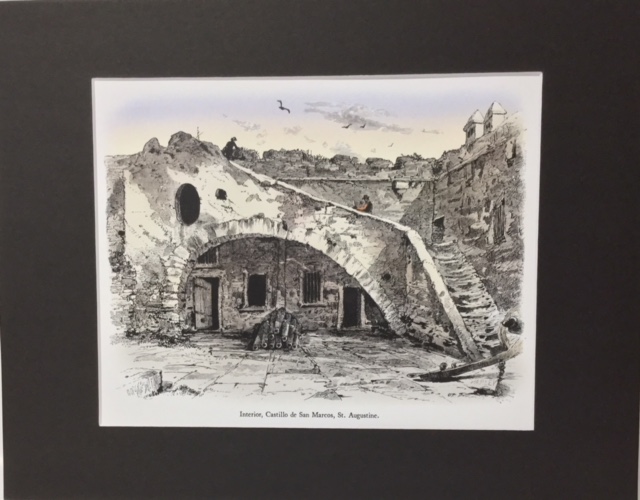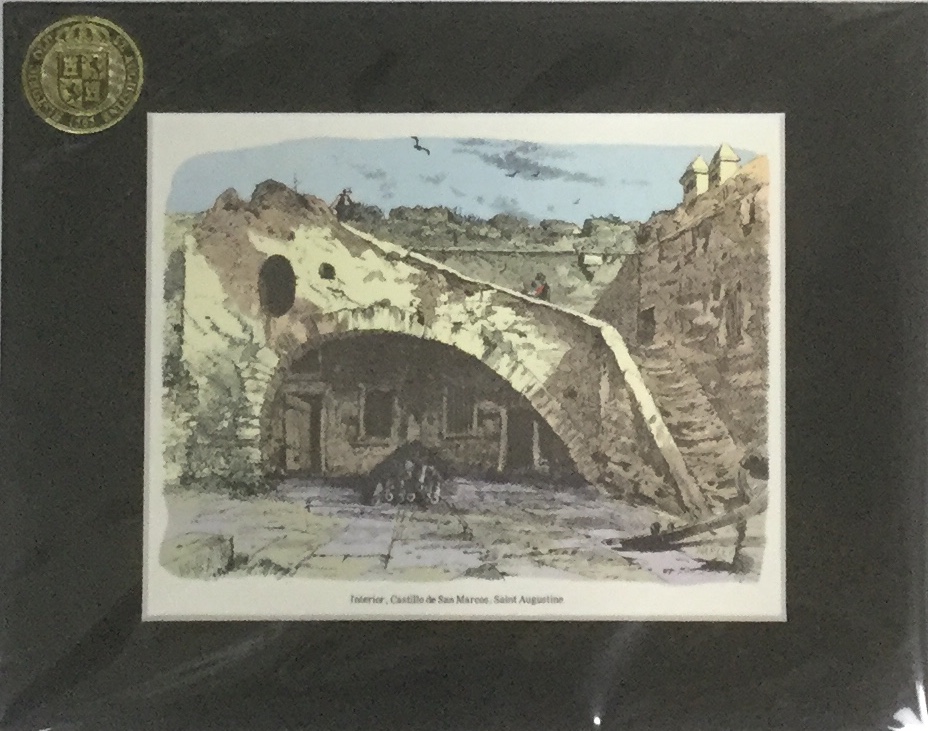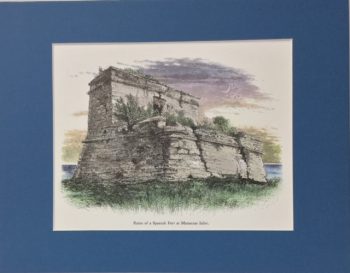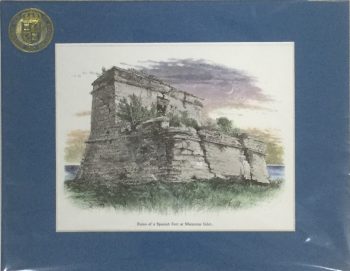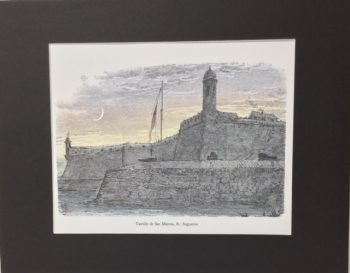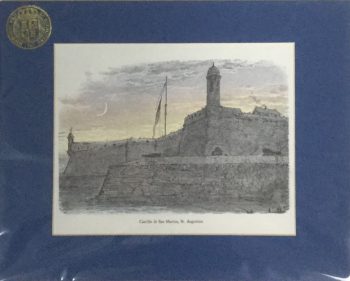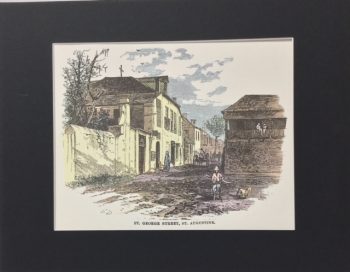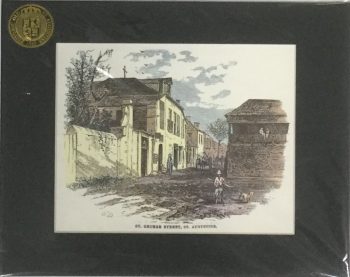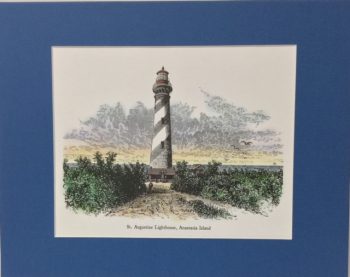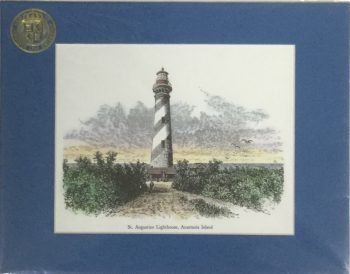Beautiful colored matted print of the interior of St. Augustine’s Castillo de San Marcos. Comes sealed in a poly sleeve stamped with the cities crest. Available in blue or black matting.
11″ x 14″ matted
8″ x 10″ picture
CASTILLO DE SAN MARCOS
ST. AUGUSTINE, FLORIDA
This print is an offset lithograph reproduced from a wood engraving in the 1872 edition of “Picturesque America”
Early in the 1600’s, Britain entered North America in earnest, bent upon seizing Spanish claimed territory. In 1607, Englishmen settled at Jamestown; by 1653 they had pushed south to settle in present-day North Carolina. The British again sacked St. Augustine in 1668, and this hit-and-run attack, followed by the English settlement of Charleston (in today’s South Carolina) in 1670, caused Spain to build a defensive stone fort at St. Augustine- Castillo de San Marcos. Construction began in 1672 and continued at intervals until 1695.
Castillo de San Marcos came under fire in 1702 during Queen Anne’s War, when the English seized St. Augustine and unsuccessfully besieged the fort. The 50-day military operation ended with the burning of the city, but the Castillo emerged unscathed, thus becoming the symbolic link between the old St. Augustine of 1565 and the new city that rose from the ashes. As disputes with England continued, earthwork defense lines were built on the north and west limits of the settlement, and St. Augustine became a walled city, In 1728, a British force from (South) Carolina
started to attack but was discouraged by the northern defense line.
As English settlers and soldiers moved into Georgia, Spain began to modernize the Castillo. The English struck in 1740 and again laid siege to the Castillo and blockaded Matanzas Inlet to prevent the Spaniards from using this avenue of communication with Havana. But the Spanish, heartened by military successes north of St. Augustine, did not waver through a 27-day, nerve shattering, British bombardment of the fort and the city. When the enemy lifted the blockade prematurely, the Spanish brought in critically needed provisions through Matanzas Inlet. Finally, with the hazards presented by the hurricane season, the British army had no choice but to abandon the siege and the fleet sailed away.
In 1763, as a result of the French and Indian War, Spain ceded Florida to Great Britain in return for British-occupied Havana. The British garrisoned Matanzas and strengthened the Castillo, holding the two forts during the American Revolution. By the provisions of the Treaty of Paris of 1783, which ended the war, Great Britain returned Florida to Spain.
After the American Revolution, separatists, Indians, and renegades created incidents which led to serious Spanish-American tensions, causing Spain to cede Florida to the United States 1821. The Castillo, which the U.S. government named Fort Marion, housed Indian prisoners during the Seminole War of the 1830’s. Confederate troops occupied it briefly during the Civil War and later, western Indian prisoners were held there. It was last used during the Spanish-American War as a military prison.
Related products
-
Fort Matanzas Matted Print, Medium
$10.00 — SKU: 13701-E -
Castillo de San Marcos Matted Print, Medium
$10.00 — SKU: 13701-D -
St. George Street Matted Print, Medium
$10.00 — SKU: 13701-I -
St. Augustine Lighthouse Matted Print, Medium
$10.00 — SKU: 13701-B
- Home
- Full Catalog
- Product Categories
- All
- Bags & Handbags
- Ball Caps
- Books & Guides
- Ceramics
- Civil War
- Food & Drink
- Globes
- Historical Documents
- Key Rings
- Kids
- Lapel Pins
- Magnets
- Maps & Prints 11″X14″
- Mugs
- Ornaments
- Patches
- Playing Cards
- Postcards & PC Booklets
- Posters
- Matted Prints
- Replicas
- School Supplies
- Shot Glasses
- Spoons
- Stickers
- Thimbles
- About Us
- Contact Us

